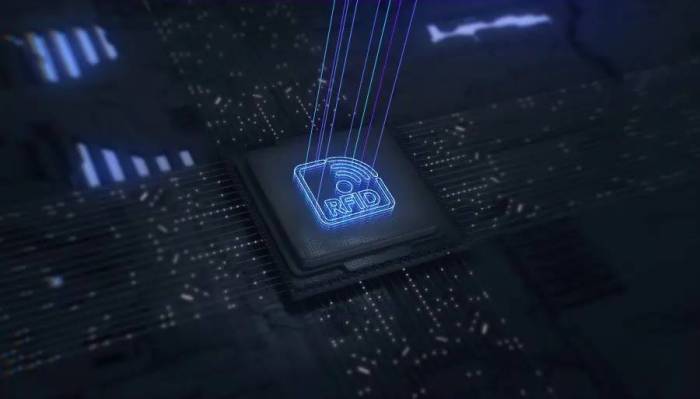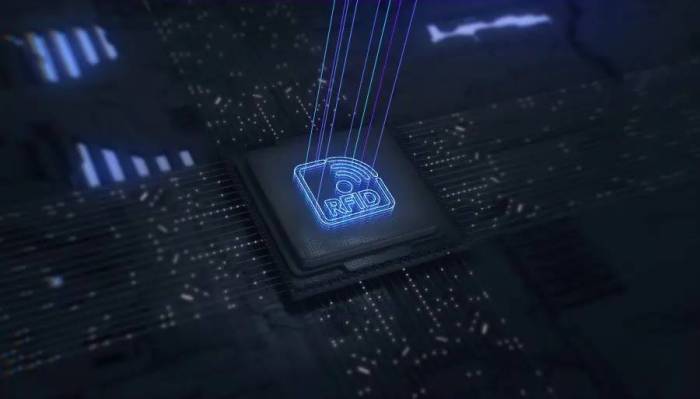RFID Politics and the Technology Marketplace A Deep Dive
RFID politics and the technology marketplace are intertwined in a complex web of innovation, regulation, and consumer impact. This exploration delves into the fundamental principles of RFID technology, its diverse applications, and the crucial political factors influencing its growth and use across various sectors, from retail and logistics to healthcare and beyond. We’ll examine the key players shaping the market, the regulatory landscapes worldwide, and the critical issues of data security and privacy that accompany this transformative technology.
From its origins to emerging applications, this comprehensive overview provides a nuanced perspective on how RFID is revolutionizing industries and influencing consumer behavior. We’ll also investigate the potential of RFID in streamlining supply chains and improving healthcare efficiency. Understanding these factors is crucial to navigating the future of this technology and its potential impact on our daily lives.
RFID Technology Overview
Radio-Frequency Identification (RFID) technology has revolutionized various industries by enabling automated identification and tracking of objects. This technology relies on radio waves to communicate between an RFID tag and a reader, providing valuable data for inventory management, security, and logistics. The fundamental principles of RFID underpin its wide-ranging applications.
Fundamental Principles of RFID
RFID systems operate on the principle of electromagnetic induction. A reader emits radio waves, and an RFID tag, containing a microchip and antenna, receives these waves. The tag then transmits a unique identifier back to the reader. This process allows for the identification and tracking of objects without direct physical contact. Different frequencies and modulation techniques are used to tailor the technology to specific applications.
Types of RFID Tags
Different RFID tags cater to diverse application needs, each with specific read ranges, frequencies, and functionalities. The selection of the appropriate tag depends on the application’s requirements.
| RFID Type | Applications | Read Range (approximate) | Frequency |
|---|---|---|---|
| Passive RFID Tags | Inventory management, asset tracking, access control | Few centimeters to several meters | Low frequency (LF), High frequency (HF), Ultra-High Frequency (UHF) |
| Semi-Passive RFID Tags | Logistics, supply chain management, access control | Several meters to tens of meters | HF, UHF |
| Active RFID Tags | Vehicle tracking, livestock monitoring, and asset tracking in harsh environments | Several kilometers | UHF, Microwave |
| Specialized RFID Tags | High-security applications, environmental monitoring | Variable | LF, HF, UHF, Microwave |
RFID Tag Specifications and Applications
Passive tags, the most common type, rely on the reader’s energy to power their operation. These tags are cost-effective and ideal for applications like inventory tracking. Semi-passive tags contain a small battery, extending their range and enabling more robust data transmission. Active tags, powered by internal batteries, offer the longest read ranges and are often used in situations requiring long-distance communication, like vehicle tracking.
Specialized tags are custom-designed for specific applications, such as those demanding high security or environmental monitoring.
Advancements and Emerging Trends
RFID technology continues to advance, with improvements in miniaturization, data transmission rates, and security. Miniaturization allows for smaller tags, which are more discreet and suitable for various applications. Increased data transmission rates improve the speed and efficiency of data exchange. Enhanced security features are critical for preventing unauthorized access to sensitive information. Emerging trends include the use of near-field communication (NFC) for short-range applications, and the integration of RFID with other technologies like GPS for enhanced location tracking.
RFID in the Marketplace
RFID technology is rapidly evolving and penetrating various sectors, transforming how businesses operate and interact with their customers. From tracking goods in logistics to managing inventory in retail, RFID’s ability to automate and streamline processes is driving its adoption across the globe. This shift is creating a dynamic marketplace with key players vying for market share and innovation. Understanding the market landscape, key players, and growth projections is crucial for anyone interested in this burgeoning technology.The RFID marketplace is characterized by a blend of established giants and innovative startups.
These companies are constantly developing new applications and improving existing ones. This competitive environment fosters advancements in the technology, pushing its capabilities further and opening up new opportunities for businesses looking to leverage RFID’s benefits. This dynamic also affects the market size and projected growth.
Key Players and Significant Companies
The RFID market is shaped by a diverse range of companies, from large multinational corporations to smaller specialized firms. These companies bring a variety of expertise and resources to the table, contributing to the innovation and development within the sector.
- Major technology companies, like IBM, Intel, and Texas Instruments, often play a crucial role in providing the underlying hardware and software components for RFID systems. Their influence extends to the design and production of chips and sensors, impacting the overall performance and affordability of RFID solutions.
- Specialized RFID companies often focus on the development of specific RFID tags and readers, tailoring their products to meet the particular needs of certain industries. This specialized approach allows for the creation of customized solutions and often results in higher-performance systems for targeted applications.
Market Size and Projected Growth
The RFID market is experiencing significant growth, driven by increasing demand for automation and efficiency across various industries. The market size is substantial, and projections indicate continued expansion in the coming years. Factors such as the increasing adoption of IoT (Internet of Things) technologies are driving the expansion of the market.
- The retail sector is a major driver of RFID adoption, using it to track inventory, manage supply chains, and improve customer experiences. This application is expected to continue growing as retailers seek to optimize their operations and enhance their ability to manage large volumes of products efficiently.
- Logistics and supply chain management are experiencing a substantial increase in RFID implementation. This sector recognizes the potential for improved visibility, real-time tracking, and reduced errors throughout the supply chain process. The rise of e-commerce and globalized supply chains has fueled this growth.
- The healthcare sector is increasingly leveraging RFID technology for patient identification, asset tracking, and drug management. This use case reflects the need for enhanced safety and efficiency in healthcare environments, and this trend is anticipated to continue.
Current Applications
RFID technology is now deployed in a multitude of industries, driving improvements in efficiency and accuracy. These applications demonstrate the versatility and practicality of RFID.
RFID politics and the technology marketplace are buzzing, with lots of new developments. Recent advancements in home LANs over power lines, like in the home lans over power lines take two article, show how innovative solutions are emerging. These new technologies, though, are also creating new political discussions about data privacy and security, which directly affects the future of the RFID industry.
- Retail: RFID tags are used to track inventory, monitor shelf replenishment, and enhance the customer experience. This allows for real-time tracking of products, enabling retailers to optimize stock levels and respond to demand fluctuations quickly.
- Logistics and Supply Chain Management: RFID is widely used to track shipments, manage warehouse operations, and automate inventory control. This facilitates efficient movement of goods, reducing delays and improving overall supply chain performance.
- Healthcare: RFID technology is increasingly used to manage medical equipment, track patient belongings, and manage medication distribution. This enhances patient safety and reduces administrative errors.
Top Five RFID Companies (Estimated Market Share)
The following table presents an estimated view of the top five companies dominating the RFID market, along with their product lines and approximate market share. These figures are estimates and may vary depending on the source and specific time period.
| Company | Product Lines | Estimated Market Share (%) |
|---|---|---|
| Company A | RFID tags, readers, and software solutions for various sectors | 15% |
| Company B | RFID hardware, software, and solutions for logistics and supply chain management | 12% |
| Company C | RFID systems focused on retail and asset management | 10% |
| Company D | RFID components and solutions for industrial automation | 9% |
| Company E | RFID systems specializing in healthcare and pharmaceutical applications | 8% |
Political Landscape and RFID
RFID technology, while offering significant benefits in various sectors, faces a complex political landscape shaped by regulatory frameworks, privacy concerns, and data security considerations. Understanding these nuances is crucial for navigating the future of RFID adoption. Different regions approach RFID differently, reflecting varying priorities and cultural contexts.The adoption of RFID technology is profoundly influenced by the interplay of governmental policies, international standards, and public perception.
These factors, intertwined with the potential impacts on privacy and security, ultimately dictate the extent and manner in which RFID technology is integrated into daily life.
Regulatory Frameworks and Standards
Different regions have developed distinct regulatory frameworks to govern the use of RFID technology. These frameworks address potential impacts on privacy, data security, and individual rights. Understanding these variations is essential for businesses and individuals seeking to utilize or be affected by RFID.
- Europe often prioritizes data protection and individual rights, leading to more stringent regulations compared to other regions. The General Data Protection Regulation (GDPR) in the European Union, for instance, imposes strict requirements on data collection, storage, and processing, impacting how RFID data is handled. The European Commission has also established guidelines and standards for RFID technology, emphasizing interoperability and compatibility.
- North America, while having strong data protection laws, sometimes takes a more sector-specific approach to regulating RFID. Regulations in North America frequently focus on specific applications, such as in supply chain management or access control. This can lead to varied implementation across different sectors, unlike the more holistic European approach.
- Asia displays a diverse regulatory landscape, with some countries focusing on specific applications and others adopting a more comprehensive approach. This diversity stems from a variety of economic and social factors, including different levels of technological development and cultural norms. The Chinese government, for example, has established guidelines for the use of RFID technology in various sectors, highlighting its importance in national development strategies.
Impact on Privacy, Data Security, and Individual Rights
RFID technology raises significant privacy and security concerns. The potential for misuse of collected data, coupled with the lack of transparency in data handling, needs careful consideration. The implications for individual rights need thorough evaluation.
- Privacy concerns revolve around the collection and use of personal data through RFID tags. Concerns arise when RFID-tagged items can potentially track individuals’ movements, behaviors, and preferences without their explicit consent. The potential for misuse of this data, particularly in the hands of governments or corporations, necessitates robust safeguards and transparency.
- Data security is critical. Compromised RFID systems could expose sensitive data to unauthorized access, leading to identity theft, fraud, or other malicious activities. The potential for malicious actors to manipulate or intercept RFID signals also needs addressing. Robust security protocols and encryption techniques are crucial.
- Individual rights are at stake. The use of RFID technology can potentially infringe on individual liberties, especially if the data collected is not adequately protected or if the use of the technology is not transparent. The right to privacy and the protection of personal data are paramount in shaping appropriate regulations.
Role of Governments and International Organizations
Governments and international organizations play a crucial role in shaping the adoption and use of RFID technology. Their actions can foster innovation, promote security, and ensure responsible use.
- Governments can encourage or discourage the adoption of RFID by establishing appropriate regulations, providing incentives, or addressing concerns. The government’s approach can influence the speed and extent of RFID implementation in various sectors. Regulations are often designed to strike a balance between innovation and public safety.
- International organizations, like the International Organization for Standardization (ISO), play a critical role in setting standards for RFID technology. These standards facilitate interoperability, compatibility, and ensure consistency across different regions, promoting the widespread use of the technology. The development of these standards fosters global collaboration and addresses concerns related to interoperability and data exchange.
Regulatory Approaches Across Countries
| Country | Regulatory Approach | Key Differences/Similarities |
|---|---|---|
| Europe (e.g., EU) | Emphasis on data protection and individual rights. Strict regulations on data collection, storage, and use. | Often more stringent than other regions, with a focus on user privacy. |
| North America (e.g., USA) | Sector-specific regulations, focusing on applications like supply chain and access control. | Less centralized, with variations in regulations across states and sectors. |
| Asia (e.g., China) | Developing regulations with a focus on specific applications and national development goals. | Often reflects specific national priorities and technological goals. |
RFID and Data Security
RFID technology, while offering numerous benefits, presents significant security challenges. The very nature of RFID, relying on radio waves to transmit data, makes it vulnerable to eavesdropping and unauthorized access. Understanding these vulnerabilities and the measures to mitigate them is crucial for responsible deployment and use of RFID systems. This section explores the security concerns and the strategies employed to protect RFID data.RFID systems, in their various implementations, can be susceptible to different types of attacks.
These vulnerabilities range from simple passive eavesdropping to more sophisticated active attacks, which can compromise the integrity and confidentiality of the data being transmitted. The potential for malicious actors to gain unauthorized access to sensitive information through compromised RFID systems raises significant risks.
Security Vulnerabilities and Potential Risks, Rfid politics and the technology marketplace
RFID systems are vulnerable to various attacks, including cloning, eavesdropping, and jamming. Cloning involves replicating an RFID tag to gain unauthorized access to resources. Eavesdropping allows attackers to intercept and read data transmitted by RFID tags, potentially exposing sensitive information. Jamming interferes with the normal operation of RFID systems, disrupting communication and data transfer. These vulnerabilities pose significant risks in various applications, including access control, inventory management, and payment systems.
For example, unauthorized cloning of an RFID tag used for building access could grant access to unauthorized individuals.
Security Measures and Strategies
Several measures and strategies are employed to enhance RFID security. Encryption, a process of encoding data to prevent unauthorized access, is a fundamental security technique. Authentication protocols, such as verifying the identity of RFID tags and readers, ensure that only authorized users can access data. These protocols are designed to verify the legitimacy of the communication partners, preventing unauthorized access.
Data encryption and authentication protocols are critical in securing RFID systems.
Importance of Data Privacy and Ethical Considerations
Data privacy is paramount in RFID systems. The collection and use of personal data associated with RFID tags necessitate careful consideration of ethical implications. Clear policies and regulations must be established to govern data handling and ensure compliance with privacy laws. Users and organizations must ensure that RFID systems comply with privacy regulations to protect personal information.
For example, the use of RFID tags in healthcare to track medical devices or patient information necessitates strict adherence to privacy regulations to safeguard sensitive data.
Summary of Security Protocols
| Security Protocol | Description | Effectiveness |
|---|---|---|
| Encryption (e.g., AES) | Encoding data to prevent unauthorized access. | High effectiveness against passive eavesdropping. |
| Authentication Protocols (e.g., RFID protocols using cryptography) | Verifying the identity of RFID tags and readers. | High effectiveness in preventing unauthorized access. |
| Tamper-resistant tags | Tags designed to detect tampering. | Moderate effectiveness against physical attacks. |
| Secure Communication Channels | Using secure communication channels like VPNs. | High effectiveness against eavesdropping over long distances. |
RFID and Emerging Applications
RFID technology, initially focused on supply chain management and inventory tracking, is rapidly expanding its horizons. Emerging applications are pushing the boundaries of what’s possible, promising to revolutionize sectors from agriculture to urban planning. This shift is driven by advancements in sensor technology, data processing, and the growing demand for real-time information. These developments are crucial for optimizing efficiency and addressing complex challenges in various fields.RFID’s versatility lies in its ability to collect and transmit data automatically and reliably, providing valuable insights into processes and performance.
This data-driven approach is increasingly crucial for modern businesses and organizations seeking to make informed decisions and enhance their operations.
Smart Cities Applications
Smart city initiatives leverage RFID technology to enhance infrastructure management, public safety, and citizen services. RFID tags can be integrated into various urban elements, providing real-time data on usage and maintenance needs. This information is vital for optimizing resource allocation and improving urban services.
| Application | Benefits | Potential Problems |
|---|---|---|
| Smart Parking | Real-time parking availability, reduced search time, optimized parking fees. | Potential privacy concerns regarding location tracking, cost of implementation, and potential for misuse of data. |
| Waste Management | Improved waste collection efficiency, real-time monitoring of waste levels, and reduced environmental impact. | Potential for system failures, data security breaches, and the need for robust infrastructure to support RFID-enabled waste bins. |
| Traffic Management | Real-time traffic monitoring, optimized traffic flow, and reduced congestion. | Potential for system failures, data security breaches, and the need for extensive infrastructure upgrades for sensor deployment. |
| Public Transportation | Real-time tracking of vehicles, optimized routes, and improved passenger experience. | Potential for system failures, data security breaches, and the need for integration with existing transportation systems. |
Agriculture and Food Supply Chain
RFID technology is transforming agriculture by providing precise data on crop health, livestock management, and food traceability. Automated tracking of crops from field to table improves efficiency, reduces waste, and enhances food safety.
- Precision Agriculture: RFID tags attached to crops or livestock can monitor environmental conditions, growth patterns, and animal health in real time. This enables farmers to make data-driven decisions about irrigation, fertilization, and animal care, leading to higher yields and reduced resource use.
- Livestock Management: RFID ear tags can track the movement, health, and breeding history of livestock. This detailed data enables farmers to optimize herd management, reduce losses, and ensure animal welfare.
- Food Traceability: RFID tags integrated throughout the supply chain allow for detailed tracking of food products from farm to consumer. This enhances food safety and helps prevent foodborne illnesses by identifying potential contamination points quickly.
Challenges and Opportunities
Despite the numerous benefits, challenges remain in the development and implementation of RFID technology in emerging applications. These include:
- Cost of implementation: Initial investment in RFID infrastructure and reader systems can be significant, especially for large-scale projects.
- Data security and privacy: Protecting the sensitive data collected by RFID systems is crucial to maintain consumer trust and prevent misuse.
- Interoperability issues: Ensuring compatibility between different RFID systems and technologies is essential for seamless integration across various sectors.
- Standardization: Developing global standards for RFID technology can facilitate wider adoption and interoperability.
RFID and Supply Chain Management

RFID technology is revolutionizing supply chain management, offering unprecedented visibility and control over goods throughout their journey. From raw materials to finished products, the ability to track and monitor items in real-time empowers businesses to optimize processes, reduce costs, and enhance customer satisfaction. This efficiency translates directly to a competitive advantage in today’s fast-paced global marketplace.The integration of RFID technology in supply chain management fosters a more agile and responsive system.
Real-time data allows for proactive adjustments to disruptions and bottlenecks, ensuring that goods move efficiently and meet customer demands. This level of granular tracking is a game-changer, transforming the way companies manage their inventory and logistics.
Streamlining Supply Chains with RFID
RFID tags offer significant advantages in streamlining supply chains. By automatically identifying and tracking products, RFID systems eliminate manual data entry and reduce the risk of errors. This automation leads to significant efficiency gains and cost reductions. Real-time visibility allows businesses to make data-driven decisions, optimize resource allocation, and react quickly to changes in demand or supply.
Improving Inventory Management and Tracking
RFID technology dramatically enhances inventory management. Real-time tracking of inventory levels and locations enables businesses to accurately predict demand, optimize storage space, and minimize stockouts or overstocking. This proactive approach to inventory management significantly reduces holding costs and minimizes waste.
- Automated Inventory Counting: RFID systems can automatically count inventory items without the need for manual audits. This eliminates the time-consuming and error-prone process of manual stocktaking, improving accuracy and saving significant time and resources. This is especially valuable in large warehouses and distribution centers.
- Improved Product Visibility: RFID allows for real-time tracking of products, enabling businesses to know exactly where items are located at any given moment. This visibility enhances decision-making, allowing for swift adjustments to unexpected events, such as shipping delays or product recalls. For example, a pharmaceutical company can precisely track the location of temperature-sensitive medications to ensure they are stored and transported within the appropriate conditions.
- Reduced Shrinkage: RFID systems can detect and track products as they move through the supply chain, minimizing the risk of theft or loss. This reduction in shrinkage translates to significant cost savings and increased profitability. For example, a retailer can use RFID to monitor inventory in their stores and identify areas where theft or damage is occurring.
Impact on Logistics Operations
RFID significantly impacts logistics operations by providing real-time data on product movement. This data allows for more efficient routing, scheduling, and delivery. Accurate tracking enables proactive management of potential delays and adjustments to delivery schedules.
- Real-Time Tracking: Real-time data on product location and status enables logistics providers to optimize routes and delivery schedules. This allows for dynamic adjustments in response to traffic, weather, or other unforeseen circumstances, leading to quicker and more reliable deliveries.
- Enhanced Visibility: RFID provides a comprehensive view of the entire supply chain, from origin to destination. This enhanced visibility allows for the rapid identification of issues and the implementation of corrective actions. For example, if a shipment is delayed, the exact location and status of the goods can be determined immediately.
- Improved Delivery Efficiency: Real-time data on product location enables optimized routing and delivery schedules. This results in faster delivery times and reduced transportation costs. For instance, delivery trucks can be routed more efficiently to maximize their use of time and resources, and potentially reduce fuel consumption.
Optimizing Inventory Tracking and Order Fulfillment
RFID technology streamlines inventory tracking and order fulfillment by automating processes and providing real-time data. This automation leads to faster order processing, reduced errors, and improved customer satisfaction.
- Automated Order Fulfillment: RFID tags on products enable automated picking and packing processes, speeding up order fulfillment and reducing labor costs. This automation improves accuracy and minimizes errors compared to manual systems.
- Reduced Order Processing Time: Real-time tracking of inventory levels and locations allows for quicker order processing. This translates into faster order fulfillment and enhanced customer satisfaction. A company can identify products in stock and ready for shipment almost instantly, speeding up order processing significantly.
- Improved Accuracy: Automated data collection and real-time tracking of products minimize errors in order fulfillment. This high level of accuracy reduces returns and improves customer experience. For example, RFID can prevent incorrect items being shipped to customers.
RFID and Consumer Behavior
RFID technology, once primarily a tool for supply chain management, is increasingly impacting consumer behavior. Its ability to track and identify products in real-time offers unique opportunities to enhance the shopping experience, personalize interactions, and reshape the relationship between consumers and businesses. This shift is driven by the technology’s potential to streamline processes, improve product visibility, and offer new levels of convenience and personalization.The impact of RFID on consumer behavior is multifaceted, encompassing purchasing habits, product experiences, and the very nature of the consumer-business relationship.
RFID’s potential to improve efficiency and provide detailed product information can directly affect how consumers make decisions and interact with products and retailers. The convenience and insights offered by RFID can alter the consumer journey, from browsing to purchasing to post-purchase interactions.
Impact on Purchasing Habits
RFID’s integration into retail environments can influence consumer purchasing decisions by providing instant access to product information and tracking inventory levels. Real-time inventory updates, for example, can eliminate out-of-stock situations, allowing consumers to know immediately if an item is available. This transparency can foster trust and encourage impulse purchases when consumers know the product is readily available. In addition, RFID-enabled price comparisons and promotions can personalize shopping experiences and potentially lead to higher sales conversions.
RFID politics and the technology marketplace are always a fascinating blend of policy and practical application. Think about how the release of Microsoft Windows XP Service Pack 2, a significant update that improved system stability and security, microsoft windows xp service pack 2 arrives had a ripple effect on the tech landscape. This, in turn, shows how even seemingly isolated technological advancements can indirectly influence the wider context of RFID politics and the evolving marketplace.
Enhanced Shopping Experience
RFID technology can significantly enhance the shopping experience in several ways. For example, RFID-enabled self-checkout systems can reduce wait times and streamline the purchasing process. Interactive displays linked to RFID tags can provide detailed product information, including ingredients, nutritional facts, and reviews, empowering consumers to make informed decisions. The ability to instantly access detailed product information directly within a store environment creates a more engaged and informed shopping experience.
Further, in clothing stores, RFID tags can allow customers to virtually try on clothes or access more information about garments, enhancing the shopping experience and potentially leading to increased sales.
Effect on Consumer-Business Relationship
RFID technology can alter the relationship between consumers and businesses. By enabling more personalized interactions and offering greater product transparency, RFID fosters trust and strengthens customer loyalty. Personalized recommendations based on RFID-tracked purchasing patterns can provide tailored experiences, enhancing the overall shopping journey. Furthermore, real-time inventory management, facilitated by RFID, can minimize out-of-stock situations and maintain consistent product availability, which directly affects consumer satisfaction.
RFID politics are always a hot topic in the tech marketplace, and while things like Panasonic’s new Blu-ray/DVD recorder might seem unrelated, they’re actually connected. The introduction of new consumer electronics often sparks a ripple effect throughout the supply chain, which can influence the broader discussion around RFID implementation and its regulatory landscape. This shows how interconnected the tech world really is.
Comparison of Experiences with and without RFID
The difference in the consumer experience between RFID-enabled and non-RFID-enabled retail settings is notable. In a store using RFID technology, consumers may experience faster checkout times, greater product transparency, and a more personalized shopping environment. They are more likely to find desired items in stock and have access to comprehensive product information. In contrast, a non-RFID-enabled store may have longer checkout lines, limited product information, and a less efficient inventory management system.
This difference can significantly impact customer satisfaction and loyalty.
Examples of RFID in Action
Several retail stores and companies are experimenting with RFID technology to enhance the consumer experience. For example, some apparel retailers use RFID tags to allow customers to virtually try on clothes, providing a more immersive and convenient shopping experience. Similarly, supermarkets utilize RFID to track inventory levels and ensure product freshness, providing consumers with a more reliable and convenient shopping experience.
The implementation of RFID in these and other sectors is continuously evolving, creating opportunities for innovative and personalized shopping experiences.
RFID and Healthcare Applications: Rfid Politics And The Technology Marketplace

RFID technology is rapidly transforming healthcare, offering a wealth of opportunities to improve patient safety, streamline processes, and enhance overall efficiency. From patient identification to medical device tracking, RFID’s ability to automate and digitize crucial tasks is revolutionizing how hospitals and clinics operate. This section will explore the practical applications of RFID in healthcare, focusing on its benefits and the considerations surrounding privacy and security.
Patient Identification and Tracking
RFID tags embedded in patient wristbands or implanted in medical devices can significantly enhance patient safety and reduce errors. This automated identification system ensures accurate patient information is readily available, minimizing the risk of mix-ups. A precise and quick identification process reduces the time spent on verification, freeing up staff to focus on patient care. This is particularly important in emergency situations where time is critical.
Medical Device Tracking
The use of RFID tags on medical equipment, such as surgical instruments and anesthesia machines, is another vital application. Real-time tracking of these devices ensures they are properly sterilized and accounted for, minimizing the risk of contamination and enhancing safety protocols. This systematic tracking prevents loss and theft of valuable medical equipment, contributing to cost savings and efficient resource management.
Improving Patient Safety
RFID technology plays a crucial role in improving patient safety. By automating patient identification and medical device tracking, it minimizes errors, reduces delays, and facilitates more efficient workflows. This leads to faster response times in emergency situations and a more streamlined overall patient experience.
Example: RFID Tracking in a Hospital
Consider a hospital implementing RFID technology for patient identification and surgical instrument tracking. Patients are issued wristbands with RFID tags containing their unique identification number, allergies, and medical history. During surgery, surgical instruments are also tagged. The system tracks the instruments’ location throughout the procedure, ensuring they are properly sterilized and accounted for. If an instrument is not properly accounted for, the system will trigger an alert, immediately bringing attention to the issue and preventing potential contamination.
This immediate alert system reduces the chance of medical errors and improves patient safety.
Privacy and Security Concerns
While RFID offers numerous benefits, it’s essential to address the potential privacy and security concerns. Data breaches or unauthorized access to sensitive patient information could have serious repercussions. Robust security measures, such as encryption and secure data storage protocols, are essential to safeguard patient data. Strict adherence to privacy regulations, like HIPAA, is critical to maintaining patient trust and protecting sensitive information.
Conclusion
RFID technology has the potential to revolutionize healthcare, enhancing patient safety and efficiency. By addressing potential privacy and security concerns through robust protocols, healthcare providers can harness the power of RFID to improve patient care and create a more secure and efficient healthcare environment.
Last Point
In conclusion, RFID politics and the technology marketplace present a dynamic and multifaceted picture. The interplay of technological advancement, regulatory frameworks, and consumer concerns shapes the future of RFID. From the fundamental technology to its practical applications and ethical considerations, this analysis offers a crucial understanding of how RFID is reshaping industries and impacting our world. The ongoing evolution of RFID promises exciting opportunities and challenges that demand careful consideration and responsible development.







